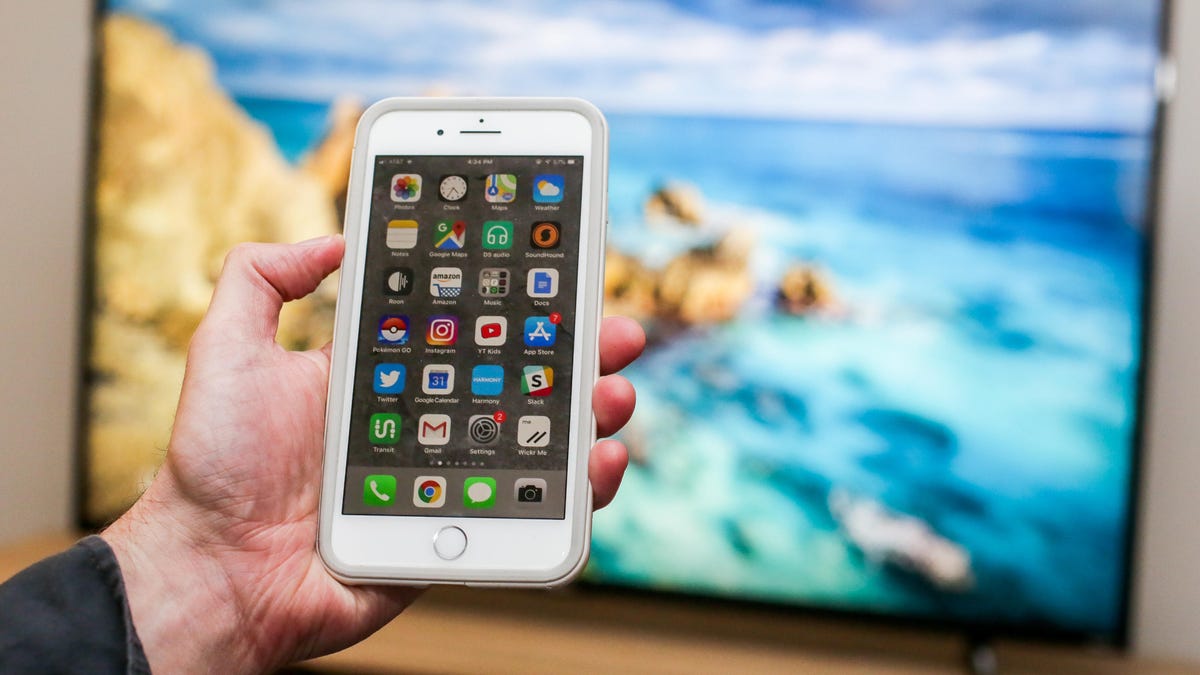Google Chromecast vs Apple AirPlay: Which is better for streaming from your phone?
Both let you use your phone to control audio and video streamed to your sound system or TV. Which one is better for you?

Chromecast and AirPlay let you play your media on the big screen.
Your phone can make a great controller for music, movies and TV in the home. Maybe you want to send music from your phone or an app like Spotify to your speaker system. Or maybe you want to control Netflix on your mobile device and watch it on your TV.
Two phone-to-AV systems stand out above the crowd: Google Chromecast and Apple AirPlay . Both let you stream music and video to a TV, speaker or other device around the home. While all AirPlay and Chromecast devices support audio, not as many handle video -- the main devices that do are the Apple TV ($149) or Apple TV 4K ($179) and Google Chromecast ($35) streamers.
Meanwhile Apple AirPlay 2's main additions are multiroom audio, stereo pairing for the Apple HomePod ($349), and the ability to stream to 2019 televisions.
So if you're investing in new equipment, which logo should you be looking for on the box? Is one better than the other? As you can probably guess, it often boils down to whether you use an iPhone or an Android phone. Let's dig in.
Chromecast works with more phones, tablets and computers
Chromecast works with Android phones and tablets, iPhones and iPads, and any Chrome browser, whether it's on a PC or a Mac computer. Meanwhile AirPlay is largely restricted to being initiated on Apple devices.
Regardless of whether you have an Android device or an iPhone, Google apps like YouTube and Google Play Music let you use Chromecast, as do numerous third-party apps like Spotify, Pandora, Netflix and Hulu.
Official AirPlay support on Android is sparse, at best. At CES 2019, media software VLC announced it was bringing AirPlay to Android, but that's about it aside from some lesser-known apps in Apple's store. New TVs from New TVs from Samsung and others support AirPlay, but you still need an iPhone to use it.
Both have good third-party device support
The now-discontinued Chromecast Audio was a $35 audio streaming dongle with a 3.5mm output.
Unlike some other proprietary multiroom protocols like Sonos and Amazon Multi-Room Music, neither Chromecast built-in nor AirPlay 2 is tied to specific hardware.
AirPlay was originally designed to be used only by Apple products but the company soon relaxed its stance, and AirPlay 2 was designed to be integrated with by multiple manufacturers. As of March 2019, over a dozen brands have announced support for AirPlay 2.
Chromecast built-in has had multiroom audio since several years before AirPlay 2 even appeared, so it definitely has the jump on its competitor. The cost of entry is also much lower thanks to the $35 Chromecast (and the now-discontinued Chromecast Audio of the same price). But as with AirPlay, there are also dozens of speakers and audio systems that support the standard.
Both are easy to set up and use
The systems use similarly named apps to set up new devices: Google Home and Apple Home. Apple's system is noticeably slicker, while Google's looks like a middle-school quiz, but both apps get the job of connecting your devices done.
In practice, using either system to stream content day-to-day is mostly invisible -- your equipment simply appears in whichever app you use. Tap the AirPlay or Chromecast icon and your media plays. In our time using both systems there have never been any noticeable problems that didn't involve internet or Wi-Fi connectivity.
Chromecast is better for audiophiles
If you're an audio quality nerd there's one difference between the two streams, and it's a numbers thing -- AirPlay/AirPlay 2 are stuck at CD quality (16/44) while Chromecast allows up to 24/96 streams. If squeezing the maximum amount of detail out of your hi-fi system is a priority, this may be a deciding factor. When we test at CNET Labs we always try to listen to the highest-quality streams, and prefer uncompressed hi-res where possible.
It's worth noting though that on most content there is no difference -- on MP3 and CD rips especially -- and the emphasis is on compatibility with high-bit-rate formats rather than a tangible improvement in sound quality.
Chromecast is better for voice control
The Google Home Mini is both a voice assistant and a Chromecast speaker.
Voice control is the newest battleground for multiroom music, and along with Amazon (Alexa), Apple and Google are at the forefront. AirPlay is at a significant disadvantage here because there is only one smart speaker that uses Siri , that being the Apple HomePod, and for its $350 asking price you could buy seven Google Home Mini speakers (or Amazon Echo Dots). Apple's voice assistant also is a long way behind Google's -- especially when it comes to general searches and smart home support.
Meanwhile, Chromecast works in conjunction with smart speakers from Google, Pioneer, Klipsch, insignia... the list goes on. It's also supported by many receiver brands, including Sony, Pioneer and Onkyo, and TVs from Vizio and Sony. Sorry, Apple, this round is a one-sided contest.
Chromecast is better, unless you're an Apple person
In the end, both systems are able to perform their functions as well as you need them to, but the Chromecast platform offers more choice. If you buy an AirPlay speaker or device and want to use it with an Android phone, you're basically out of luck. Chromecast speakers and devices, on the other hand, will work with either kind of phone.
If you don't anticipate using anything but your Apple devices to connect to your home AV gear, AirPlay's narrower compatibility isn't an issue. But for most users, a Chromecast is the system we'd recommend. It integrates seamlessly with Google Assistant, it supports higher-quality audio and it plays nice with both iOS and Android phones.

